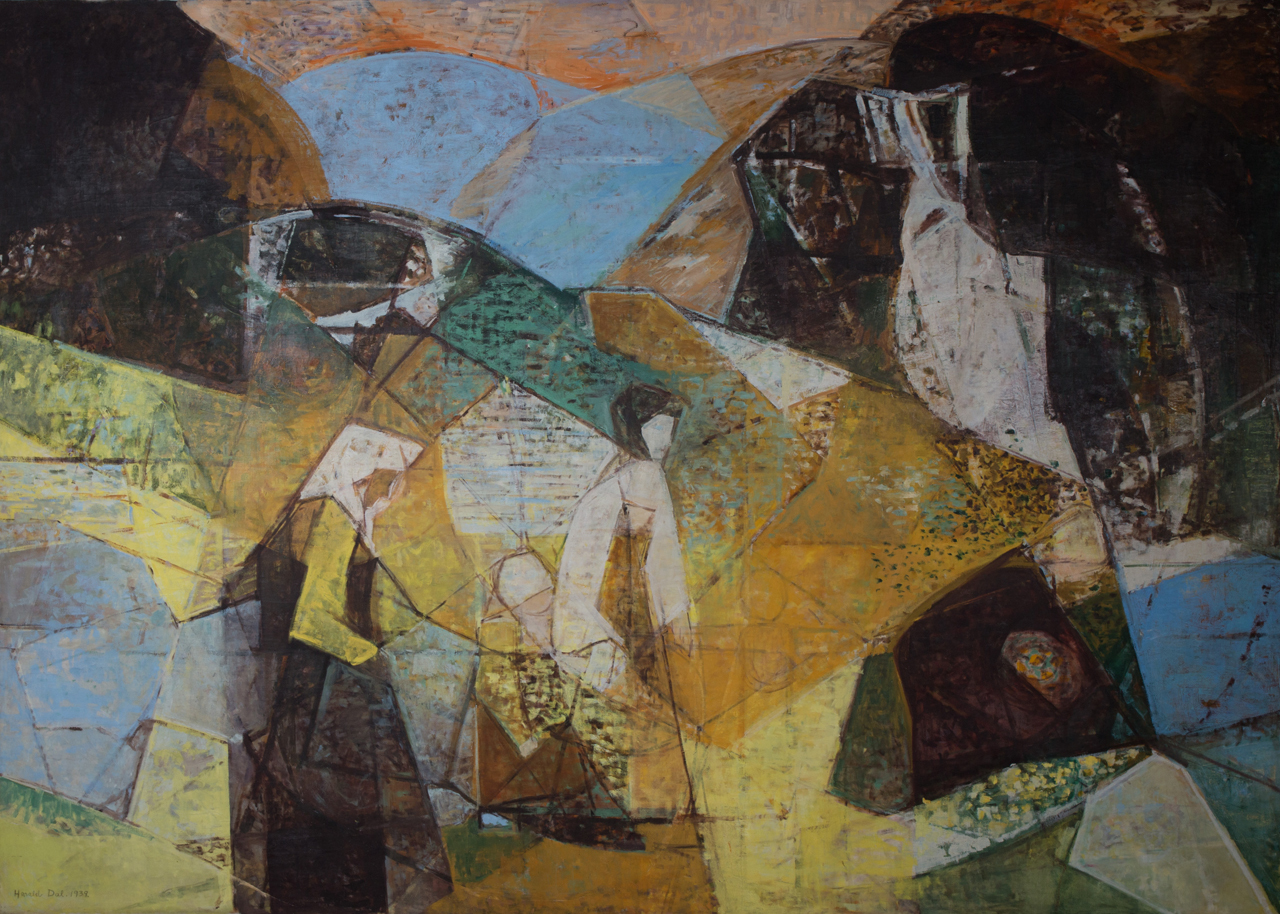Harald Dal (1902 - 1972)
Harald Dal’s early career is marked by a strong interest in Norwegian folk art. He first trained as a décor painter, thus developing an understanding of traditional artistic expressions. This can be recognised through both his choice of subjects and his early colour palette. The mid-1930s, however, represent a watershed in his art, for it was then that he developed a geometric structure and a distinctive and often quite restricted range of colours. The compositional and formal aspects came to be central components in his works. Dal was also a much-used and popular portrait painter.
"Harald Dal did not enter the collection with any works until after 1945, though I had a connection with him just before the war. However, during the war I bought the large "Mountain village" through art critic Pola Gauguin. The picture hung in the house of sculptor Nic. Schiøll at Smestad, and I remember Gauguin, Bjarne Engebret and I went to see it. I liked the picture and took it right away. " (Halvdan Hafsten)

Mountain Village, 1939. Decorative work for the Norwegian Pavilion at the World Exposition in New York, 1939. Purchased via the artist and the art critic Pola Gauguin, Oslo.
‘Art expresses what is hidden and direct and what will come to be invisible. For me, it’s a matter of organising a pictorial plane with painterly life. A picture should be as meaningful upside-down as it is right-side-up. I often turn my pictures upside-down in the creation process, and it sometimes happens that this is the right position. My interest is always to organise forms, colours and lines as means for achieving the expression I feel a picture should have. I don’t want to confine nature’s components – air, water, mountain – but to let the elements interact with each other.’ (Written by the artist at Hafsten’s request)
Article and archive selection
Hanne Beate Ueland, director Stavanger art museum
Photo
Terje Tveit / AmS